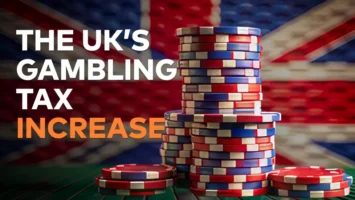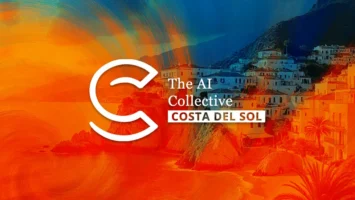Macau September 2025 GGR and economic activities outlook

Macau September 2025 GGR and Economic Activities arrived with a mixed message for investors and operators, modest year-on-year growth tempered by seasonality and a super typhoon, yet underpinned by a slate of tourism catalysts and headline events that set the stage for a stronger fourth quarter.
What the September numbers say
Macau casinos generated MOP 18.29 billion in September, a 6 percent rise year on year that fell short of the roughly 9 percent forecast from analysts. The total was down 17.5 percent month on month from August, which had surged to MOP 22.15 billion, a post-pandemic high.
September’s performance reflects the market’s typical slowdown after the July and August vacation peak. Authorities anticipated softer demand and launched a 13-week, city-wide stimulus from 1 September to 30 November that offers residents chances to win e-vouchers when spending at participating businesses.
Even with the softer month, cumulative gross gaming revenue for the first nine months of 2025 reached MOP 181.34 billion, up 7.1 percent compared with the same period last year. Within that picture, the summer months were strong, with July and August up 19 percent and 12.2 percent year on year respectively.
Weather and seasonality weighed on performance
Seasonal factors were not the only headwind. Typhoon Ragasa brought Macau its highest Signal No.10 warning, prompting a government-ordered suspension of casino operations beginning in the early hours of 24 September. Properties were permitted to reopen at 2 am on 25 September once conditions improved.
Analysts say the shutdown mattered. Vitaly Umansky of Seaport Research Partners estimated the storm likely clipped growth by about 6 to 7 percent, which implies year-on-year growth might otherwise have reached 12 to 13 percent. The combination of seasonality and weather left September as one of the lower revenue months of 2025, second only to January.
“Growth should be driven by increased marketing and, importantly, continued ease of money outflows along with robust visa issuance. Continued entertainment events will further help support demand.”
Why October looks different
Golden Week began with National Day and spans eight days, and the Macau Government Tourism Office projects 1.2 million visitors over the holiday. MGTO head Maria Helena de Senna Fernandes expects an average of 150,000 daily arrivals, a level that could fill about 90 percent of hotel rooms.
Citigroup analysts George Choi and Timothy Chau estimate casinos could generate daily GGR of MOP 1.05 billion during the holiday. Golden Week momentum may extend into mid-October as heavyweight events feed visitation and spend, including the NBA China Games at the Venetian Macao from 10 to 12 October, featuring the Brooklyn Nets versus the Phoenix Suns and a special appearance by Shaquille O’Neal.
Seaport Research Partners expects a 13 percent GGR increase in October and projects full-year 2025 growth of 8.4 percent. Within that, they forecast fourth-quarter growth of 12.4 percent compared with 8.3 percent in the first half, signaling confidence in the rebound trajectory as travel and consumer confidence normalize.
Technology and game design are reshaping hold and velocity
Beyond pure footfall, product and technology are lifting yield. Citigroup highlights the growing deployment of smart tables, which can shave about five seconds from each round of baccarat, the city’s most popular game. That small efficiency can lift revenue by almost 6 percent, magnified across table floors and peak periods.
Side bets are also moving the needle. Historically a negligible contributor, side bets previously yielded less than 1 percent of turnover in baccarat. They now account for roughly 45 to 50 percent of baccarat turnover, a shift that points to improved hold and deeper player engagement without relying solely on visitation growth.
Together, faster game cycles and richer betting menus can sustain revenue per table hour, particularly during high-traffic windows like Golden Week. Operators that align staffing, marketing, and table mix with these changes are better positioned to capture incremental value from the same square footage.
Non gaming diversification takes the stage
Macau’s push to broaden its appeal is visible on the ground. From 29 September to 16 November, Wynn Resorts is hosting the Wynn Signature 2025 Hypercar Exhibition across Wynn Macau and Wynn Palace, an experience backed by the Macao Government Tourism Office and the Sports Bureau of the Macao SAR Government.
The exhibition features a curated lineup of global hypercars, including the Lamborghini Huracán GT3 EVO, the LB-Silhouette WORKS Lamborghini Huracán GT, a vintage Mercedes-Benz 300SL Gullwing, and the Aston Martin Valkyrie Spider. The activation coincides with the Macau Grand Prix and includes merchandise at the Hype Shop pop-up, strengthening the city’s positioning as a destination for experiential luxury.
The opening ceremony brought together officials and executives, including MGTO Director Maria Helena de Senna Fernandes, Sports Bureau representative Jeremy Ho, and Wynn Macau, Limited Chief Operating Officer Frederic Luvisutto. Their presence underscores the integrated approach between government and concessionaires to create compelling non-gaming reasons to visit.
“[The event] underscores Wynn’s commitment to positioning Macao as a premier destination for top-tier travellers seeking innovation, culture and experiential luxury. Through this exceptional showcase, Wynn aims to enrich tourism and lifestyle experiences through the art of motorsport, and support Macao’s development as a City of Sports and a World Centre of Tourism and Leisure.”
Tracking the transformation to a broader destination
Macau’s roadmap goes well beyond a single event. A Deloitte report commissioned by MGTO reviewed progress on the city’s tourism master plan and set ambitious objectives through 2030. The goal is for non-gaming revenue to contribute 60 percent of GDP by 2028, supported by MOP 130 billion in planned non-gaming investments by the casino concessionaires.
The study recommends multiple actions that work in tandem across infrastructure, marketing, and technology. Strategic execution and cross-border cooperation sit at the center of the plan, with a focus on attracting new visitor segments and lengthening stays.
- – strategic marketing to build awareness and broaden source markets,
- – increased capacity at airports and other points of entry to smooth travel,
- – enhancement of the visitor experience through smart technology,
- – fostering international exchange and events to diversify appeal,
- – deeper cooperation with Hengqin and cities in the Greater Bay Area.
MGTO also intends to cultivate specific segments such as weddings, transit travelers, and Generation Z, encouraging longer stays and higher per-visitor spend. Through August, the city recorded 26.9 million arrivals, up 15 percent year on year, with projections that point to 40.17 million visitors in 2025 and 46.43 million by 2030 if momentum holds.
Policy tailwinds and medium term outlook
Market watchers are tracking macro catalysts that could bolster travel and spending. Seaport’s Vitaly Umansky noted that a potential United States and China trade deal, reportedly possible by November, could lift consumer confidence and the willingness to travel to Macau.
That confidence is crucial for the base mass segment, which has been steadily recovering. Seaport forecasts 7 percent annual GGR growth in 2026 and 2027, helped by improving hotel occupancy, a stronger base mass, continued easing of money flows, and rising consumer confidence.
Layered on the operational side, the broader entertainment calendar, from sports showcases to pop culture events, should keep the destination relevant between major holidays. Sustained programming is increasingly a core driver of visitation patterns and non-gaming spend.
Data highlights at a glance
- – September GGR was MOP 18.29 billion, up 6 percent year on year,
- – sequential decline versus August was 17.5 percent,
- – accumulated January to September GGR reached MOP 181.34 billion, up 7.1 percent,
- – MGTO projects 1.2 million Golden Week visitors, about 150,000 per day,
- – Citi estimates daily Golden Week GGR around MOP 1.05 billion.
Takeaways for operators and investors
- – September’s softness was driven by predictable seasonality and an extraordinary weather event,
- – October’s setup is materially stronger given Golden Week, a dense events calendar, and technology-led yield improvements,
- – medium term growth foundations include non-gaming investments, smart tables and side bets, and potential macro tailwinds.
For operators, aligning marketing with visa trends, deploying technology to lift table throughput, and programming post-holiday entertainment are immediate levers. For investors, the cadence through October and the fourth quarter will be a key read on whether full-year growth lands in line with expectations or exceeds them.





















